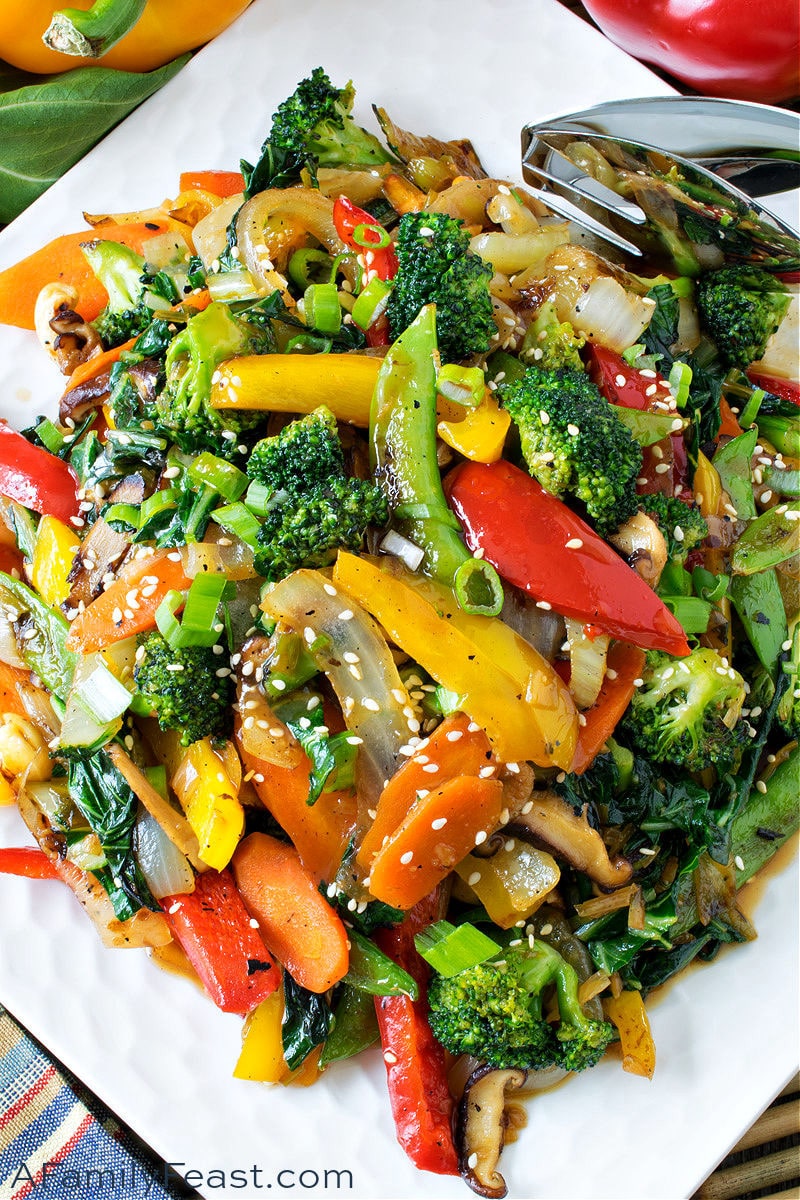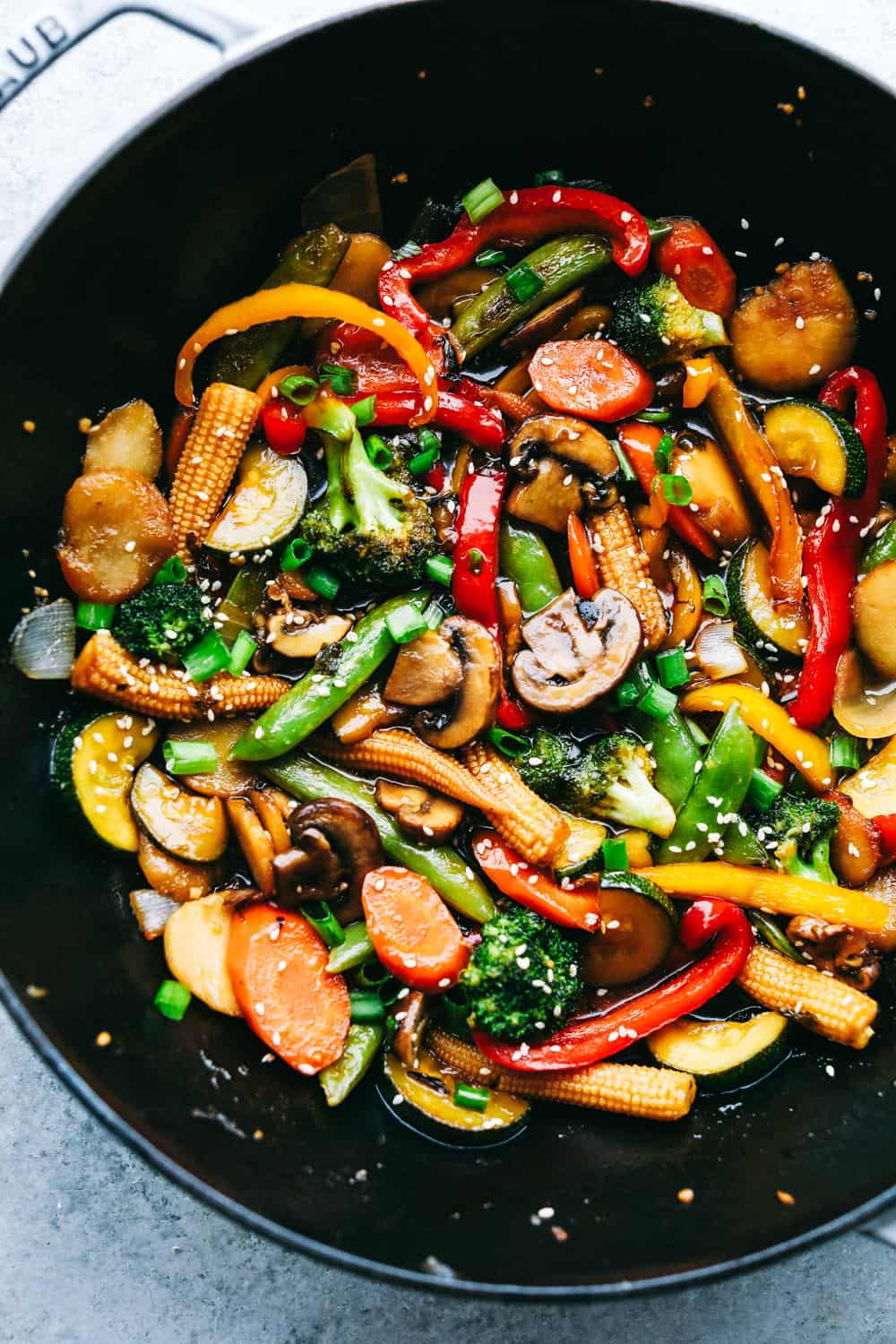Low-Calorie Stir-Fried Vegetable Recipes: A Delicious Path to Healthy Living

Imagine a world where you can enjoy a symphony of flavors without compromising your health goals. Welcome to the realm of low-calorie stir-fried vegetable recipes, where every bite is a celebration of taste and nutrition. Whether you're on a journey to lose weight or simply seeking to incorporate more nutritious cooking into your lifestyle, these recipes are your passport to a healthier, happier you. Let's dive in and explore the vibrant world of stir-fry!
The Art of Healthy Stir Fry
Stir-frying is an ancient cooking technique that originated in China, known for its quick cooking times and minimal oil usage. This method not only preserves the natural flavors and textures of vegetables but also retains their vital nutrients. With the right ingredients and techniques, you can create a low-calorie meal that's as delicious as it is nutritious.
The Benefits of Low-Calorie Meals
Low-calorie meals are not just about counting calories; they're about maximizing nutrient intake while minimizing excess fats and sugars. By incorporating more vegetable dishes into your diet, you can boost your fiber intake, which aids in digestion and helps you feel fuller for longer. This is a crucial component of any weight loss recipe, as it prevents overeating and supports sustainable weight management.
Essential Ingredients for Nutritious Cooking
When it comes to low-calorie stir-fried vegetable recipes, the key lies in selecting the right ingredients. Here are some must-haves for your pantry:
Vegetables
- Bell Peppers: Rich in vitamins C and A, bell peppers add a burst of color and flavor to any stir-fry.
- Broccoli: A powerhouse of vitamins K and C, broccoli is a staple in any healthy stir fry.
- Carrots: Packed with beta-carotene, carrots provide a sweet crunch that complements other vegetables.
- Mushrooms: Low in calories and high in fiber, mushrooms add a meaty texture and umami flavor.
- Spinach: Loaded with iron and vitamin K, spinach is a nutritious addition that wilts beautifully in stir-fries.
Proteins
- Tofu: A versatile protein source that absorbs flavors well, tofu is a great low-calorie option.
- Chicken Breast: Lean and packed with protein, chicken breast can be added sparingly for a protein boost.
- Shrimp: Low in calories and high in protein, shrimp adds a delicate seafood flavor.
Sauces and Seasonings
- Soy Sauce: A staple in Asian cuisine, soy sauce adds depth of flavor. Opt for low-sodium varieties.
- Garlic and Ginger: These aromatics are essential for building flavor without adding calories.
- Sesame Oil: A little goes a long way; sesame oil adds a rich, nutty flavor.
- Chili Flakes: For a kick of heat, chili flakes can enhance the overall taste profile.
Low-Calorie Stir-Fried Vegetable Recipes
Recipe 1: Colorful Veggie Stir-Fry
Ingredients:
- 1 tbsp sesame oil
- 1 clove garlic, minced
- 1 tbsp grated ginger
- 1 red bell pepper, sliced
- 1 yellow bell pepper, sliced
- 1 cup broccoli florets
- 1 carrot, julienned
- 1 cup mushrooms, sliced
- 2 cups spinach
- 2 tbsp low-sodium soy sauce
- 1 tbsp cornstarch mixed with 1 tbsp water
Instructions:
- Heat the sesame oil in a wok or large skillet over medium-high heat.
- Add the garlic and ginger, sautéing for 30 seconds until fragrant.
- Add the bell peppers, broccoli, and carrots. Stir-fry for 3-4 minutes until slightly tender.
- Add the mushrooms and stir-fry for another 2 minutes.
- Stir in the spinach and cook until wilted.
- Pour in the soy sauce and cornstarch mixture. Stir until the sauce thickens.
- Serve hot and enjoy!
Recipe 2: Tofu and Vegetable Stir-Fry
Ingredients:
- 1 tbsp sesame oil
- 1 clove garlic, minced
- 1 tbsp grated ginger
- 1 block firm tofu, cubed
- 1 cup snap peas
- 1 cup bok choy, chopped
- 1 red bell pepper, sliced
- 2 tbsp low-sodium soy sauce
- 1 tbsp rice vinegar
- 1 tbsp honey
Instructions:
- Heat the sesame oil in a wok over medium-high heat.
- Add the garlic and ginger, sautéing for 30 seconds until fragrant.
- Add the tofu and cook until golden brown on all sides.
- Add the snap peas, bok choy, and bell pepper. Stir-fry for 3-4 minutes until the vegetables are tender.
- In a small bowl, mix the soy sauce, rice vinegar, and honey. Pour the sauce over the stir-fry.
- Stir well to coat all the ingredients.
- Serve immediately.
Recipe 3: Shrimp and Vegetable Stir-Fry
Ingredients:
- 1 tbsp sesame oil
- 1 clove garlic, minced
- 1 tbsp grated ginger
- 1 lb shrimp, peeled and deveined
- 1 cup snow peas
- 1 cup broccoli florets
- 1 carrot, julienned
- 1 cup mushrooms, sliced
- 2 tbsp low-sodium soy sauce
- 1 tbsp oyster sauce
- 1 tbsp cornstarch mixed with 1 tbsp water
Instructions:
- Heat the sesame oil in a wok over medium-high heat.
- Add the garlic and ginger, sautéing for 30 seconds until fragrant.
- Add the shrimp and cook until they turn pink. Remove the shrimp from the wok and set aside.
- In the same wok, add the snow peas, broccoli, and carrots. Stir-fry for 3-4 minutes until slightly tender.
- Add the mushrooms and stir-fry for another 2 minutes.
- Return the shrimp to the wok.
- In a small bowl, mix the soy sauce, oyster sauce, and cornstarch mixture. Pour the sauce over the stir-fry.
- Stir well to coat all the ingredients.
- Serve hot and enjoy!
Tips for Perfecting Your Stir-Fry
- Prep Ahead: Have all your ingredients chopped and ready to go before you start cooking. Stir-frying is a quick process, and you don't want to be caught off guard.
- High Heat: Use a wok or large skillet and heat it over high heat. This ensures that your vegetables cook quickly and retain their crunch.
- Minimal Oil: Use just enough oil to coat the bottom of the wok. Too much oil can make your stir-fry greasy and add unnecessary calories.
- Add Ingredients in Order: Start with aromatics like garlic and ginger, then add harder vegetables that take longer to cook, followed by softer vegetables and proteins.
- Sauce Last: Add your sauce at the end to avoid overcooking and to ensure that the flavors are well-incorporated.
Conclusion
Low-calorie stir-fried vegetable recipes are a delightful way to enjoy healthy, flavorful meals without compromising your dietary goals. By selecting the right ingredients and mastering a few simple techniques, you can create a variety of nutritious dishes that will satisfy your taste buds and support your well-being. So, why wait? Grab your wok and embark on a culinary adventure that's as good for your body as it is for your soul.
FAQs
What are the best vegetables for stir-frying?
- The best vegetables for stir-frying include bell peppers, broccoli, carrots, mushrooms, and spinach. These vegetables retain their texture and flavor when cooked quickly over high heat.
Can I use frozen vegetables in a stir-fry?
- Yes, you can use frozen vegetables in a stir-fry. However, it's best to thaw them beforehand to prevent excess water from diluting the flavors.
How can I make my stir-fry more flavorful?
- To enhance the flavor of your stir-fry, use aromatics like garlic and ginger, and experiment with different sauces and seasonings such as soy sauce, sesame oil, and chili flakes.
What is the best oil for stir-frying?
- Sesame oil is a popular choice for stir-frying due to its high smoke point and rich, nutty flavor. However, you can also use other high-heat oils like canola or peanut oil.
Can I meal prep stir-fries?
- Yes, stir-fries are great for meal prepping. You can chop and store your vegetables ahead of time, and even cook the stir-fry in advance. Just be sure to reheat it gently to avoid overcooking the vegetables.


0 Response to "Low-Calorie Stir-Fried Vegetable Recipes: A Delicious Path to Healthy Living"
Post a Comment